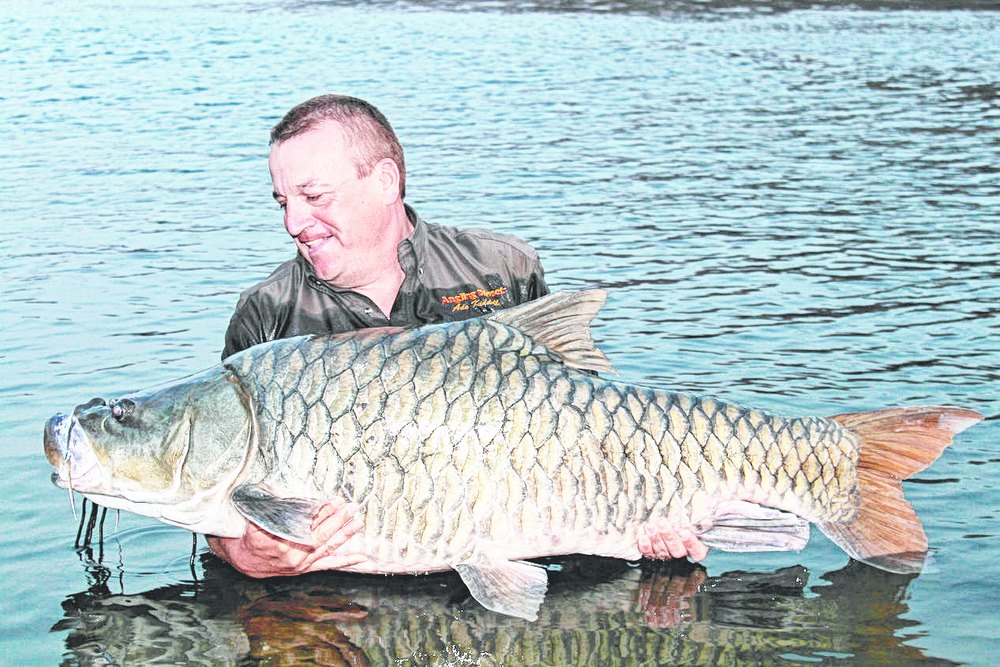
New Delhi, May 14: A large orange-finned fish, native to the Cauvery river and a target of recreational angling from colonial times until three years ago, appears to be India's first freshwater fish on the brink of extinction, scientists have cautioned.
A study by Indian and British biologists has documented signals of what they say could be a sharp decline in the population of the orange-finned hump-backed mahseer, a freshwater fish that can weigh up to 50kg.
The deliberate introduction of another fish, the non-native blue-finned mahseer from Maharashtra, along stretches of the Cauvery during the 1980s, a move intended to compensate for a decline in fish catch in the river, is among factors that have contributed to the plummeting population.
"It's a twist of irony - the non-native blue-finned mahseer brought in to repopulate the river colonised the river, proliferated, and began competing with the native orange-finned mahseer," Rajeev Raghavan, a biologist specialising in freshwater fish at the Conservation Research Group at St. Albert's College, Kochi, told The Telegraph. "But when it was introduced in the 1980s, it wasn't very clear that they were two different species."
Raghavan and his colleagues from the Bournemouth University in the UK and the Zoo Outreach Organisation, Coimbatore, used logbooks maintained by three angling camps on the Cauvery as proxy indicators of the population of the orange-finned mahseer in the river.
The orange-finned mahseer is found only in the Cauvery, while other mahseer species are found in rivers across the country. The scientists have described their findings yesterday in the journal Endangered Species Research.
"From the time the British were here, the orange-finned humpback has been a target for recreational angling," Raghavan said. "Hooking such a large fish has long been viewed as an angler's delight, foreign tourists used to come fishing here every year until 2012."
The government banned angling there in 2012 as the river's stretches became a protected area.
The scientists observed that the number of orange-finned mahseer caught and recorded by anglers in the logbooks declined between 1998 and 2012, while the number of blue-finned mahseer captured steadily increased during the period.
The researchers compared the catch against the total number of fishing hours to account for any rise or fall in the number of anglers each year.
In 2004, for instance, 28 anglers spent 2,604 hours fishing along different stretches of the river and caught 25 orange-finned mahseer and 407 blue-finned mahseer. But in 2008, 33 anglers spent 3,188 hours and caught only five orange-finned mahseer, but 1,022 blue-finned mahseer. While the decline is not steady, Raghavan said, the downward trend is clear.
His colleague Adrian Pinder at Bournemouth, who has an interest in angling, recalls reading about the orange-finned mahseer as a boy. But on his first visit to the Cauvery in 2010, he found that the fish he had caught did not match the appearance of the iconic specimens he had seen in historic photographs.
Three years ago, Pinder and Raghavan established the Mahseer Trust, a non-government organisation that seeks to protect the mahseer and its habitat.
"The blue-finned mahseer is not native to the Cauvery, but they are now among the most abundant fish in the river," Pinder said in a media release issued by Bournemouth.
"Without a doubt, their success has been at the expense of the hump-backed mahseer that historically occurred throughout the river catchment."
The scientists say India's freshwater fish are currently under pressure from multiple factors, including pollution, sand and gravel extraction and low water flow levels in rivers that can restrict the ability of fish to migrate to spawning grounds.











